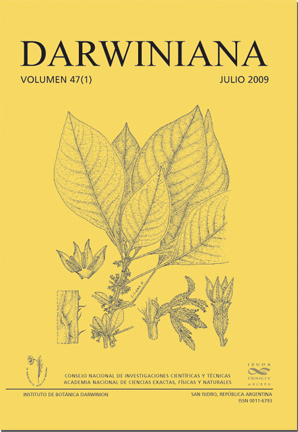Considerations about Early Formative plant foraging and horticulture in the southeast of Atacama Basin
DOI:
https://doi.org/10.14522/darwiniana.2014.471.41Keywords:
Agrocentrism, Atacama basin, complexitation, cultigens, Tilocalar Phase, vegetal resourcesAbstract
Artifact, ecofact and vegetal evidences recuperated from domestic and ceremonial deposits on village establishments of Early Formative (1500 - 400 b. C.), corresponding to the Tilocalar and Tarajne Phase, indicates that in gorges of the western slope of the Puna de Atacama (2500 - 3500 m) hunting practices were maintained in tandem with the consolidation of pastoralism practices. In this scenery the exploitation of domestic and wild plant resources was complementary and not decisive for theearliest Formative subsistence, therefore the agrarian expansion will eclosion during the next formative events (400 b. C- 500 b. C.) emphasizing the control of the piedmont oases.
Downloads
Published
31-07-2009
How to Cite
Núñez, L., McRostie, V., & Cartajena, I. (2009). Considerations about Early Formative plant foraging and horticulture in the southeast of Atacama Basin. Darwiniana, Nueva Serie, 47(1), 56–75. https://doi.org/10.14522/darwiniana.2014.471.41
Issue
Section
Archeobotany and Ethnobotany
License

Starting on 2012, Darwiniana Nueva Serie uses Licencia Creative Commons Atribución-NoComercial 2.5 Argentina .






